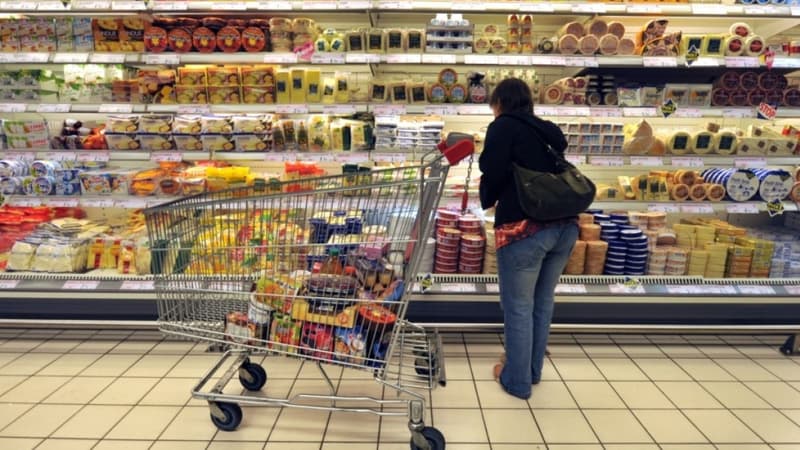The movement is on. After reaching a plateau for eleven months, around 6% annually, inflation fell in May to 5.1%. And the fall should continue in the coming months, according to the latest INSEE economic report, which forecasts 4.4% in December. So that in all of 2023 inflation should be at 5%, after 5.2% last year.
This slowdown would be mainly linked to the stabilization of energy prices and the lower rise in food prices, currently the main contributor to inflation.
At around 14% currently, food inflation should “slow down significantly, without necessarily falling on average,” says the statistics institute, which expects it to “halve by the end of the year, when it would then be between 7 and 8%”. “, due to the fall in world prices of food and energy raw materials, but also to the commercial renegotiations between manufacturers and distributors that could “accelerate this movement”.
In this context, “services would weigh more and more in general inflation and would become the main contributors from the summer on”, explain the Insee experts.
After rising 3% in May in a year, inflation in services should accelerate again, reaching 4.2% by the end of the year. In question: the “rise in wage costs” linked to the revaluations of the Smic as well as the lower impact of production costs. Without forgetting the revaluation of the rates of general practitioners should increase the prices of health services from November.
No recession in sight, but modest growth
Although inflation has started to ease, it will continue to weigh on economic activity in 2023, as evidenced by the deteriorating business climate and household confidence. In this context, INSEE revised downward its growth forecast for the second quarter, to 0.1%, instead of the 0.2% initially forecast. The tricolor economy should be slightly more dynamic in the third quarter (+0.1%) and fourth (+0.2%). In the end, annual growth should stand at 0.6%, after 2.5% last year. The government has 1%.
To explain this slow growth, INSEE mentions in particular a drop in activity in commerce in the second quarter and a weak recovery in transport, “penalized by strikes in the first quarter”. Thereafter, activity growth should remain modest in many sectors, while rising interest rates should continue to affect business investment, especially in construction, until the end of the year.
As for households, consumption should fall (-0.3%) in the second quarter under the weight of food inflation, before recovering in the second half (+0.2% per quarter). Over the year as a whole, it should fall by -0.2%. Household investment should ultimately continue to fall due to tightening access to credit. The consequence is “a lower production of housing, both individual and collective, and, in general, a continuous decrease in real estate transactions,” says INSEE.
Stable unemployment rate
Along with economic activity, the labor market should slow down in 2023, with 175,000 jobs created throughout the year after +445,000 at the end of 2022, again according to INSEE.
In relation to the increase in study and work contracts and the first effects of the pension reform that will enter into force in September, the active population would increase by 50,000 workers on average per quarter. So the unemployment rate would remain stable, at 7.1%, until the end of the year, according to INSEE.
Source: BFM TV


